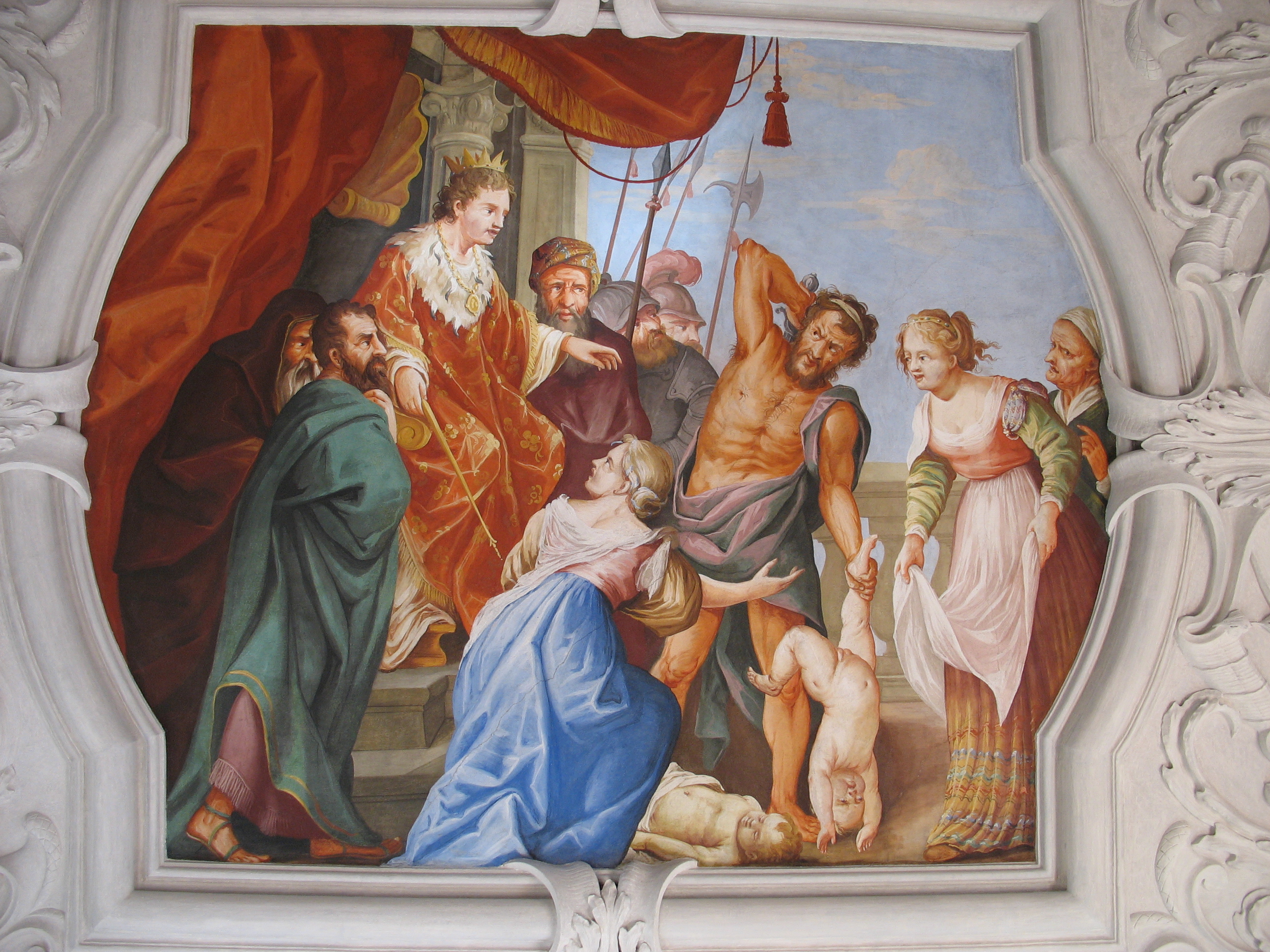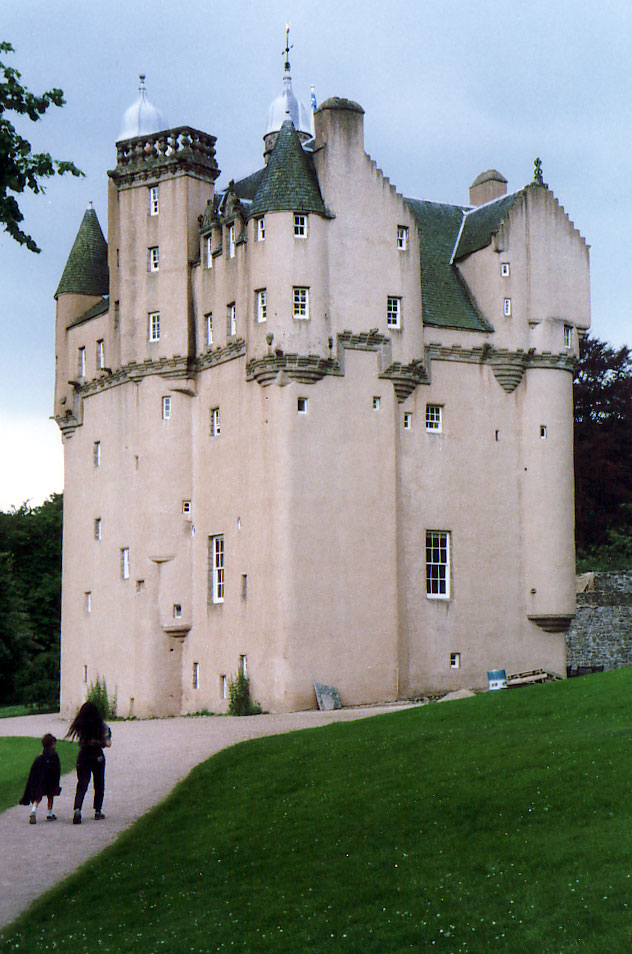|
Culross Palace
Culross Palace is a late 16th to early 17th century merchant's house in Culross, Fife, Scotland. The palace, or "Great Lodging", was constructed between 1597 and 1611 by Sir George Bruce of Carnock, George Bruce, the Laird of Carnock. The house was mainly built in two campaigns. The south block in 1597 and the north building in 1611, the year when George Bruce was knighted. Bruce was a successful merchant who had a flourishing trade with other Firth of Forth, Forth ports, the Low Countries and Sweden. He had interests in coal mining, salt production, and shipping, sending William Stewart (skipper), William Stewart to Spain for wine, and is credited with sinking the world's first coal mine to extend under the sea. Many of the materials used in the construction of the palace were obtained during the course of Bruce's foreign trade. Baltic pine, red pantiles, and Netherlands, Dutch floor tiles and glass were all used. The exterior boasts the use of crow-stepped gables, including a ... [...More Info...] [...Related Items...] OR: [Wikipedia] [Google] [Baidu] |
Crow-step
A stepped gable, crow-stepped gable, or corbie step is a stairstep type of design at the top of the triangular gable-end of a building. The top of the parapet wall projects above the roofline and the top of the brick or stone wall is stacked in a step pattern above the roof as a decoration and as a convenient way to finish the brick courses. A stepped parapet may appear on building facades with or without gable ends, and even upon a false front. Geography The oldest examples can be seen in Ghent (Flanders, Belgium) and date from the 12th century, such as the house called ''Spijker'' on the ''Graslei'', and some other Romanesque buildings in the city. From there, they spread to the whole of Northern Europe from the 13th century, in particular in cities of the Hanseatic League (with brick Gothic style), and then to Central Europe by the next century. These gables are numerous in Belgium, France (French Flanders, Eastern Normandy, Picardy and Alsace), the Netherlands, all Germ ... [...More Info...] [...Related Items...] OR: [Wikipedia] [Google] [Baidu] |
Judgement Of Solomon
The Judgement of Solomon is a story from the Old Testament in which Solomon ruled between two women who both claimed to be the mother of a child. Solomon ordered the baby be cut in half, with each woman to receive one half. The first woman accepted the compromise as fair, but the second begged Solomon to give the baby to her rival, preferring the baby to live, even without her. Solomon ordered the baby given to the second woman, as her love was selfless, as opposed to the first woman's selfish disregard for the baby's actual well-being. Some consider this approach to justice an archetype, archetypal example of an impartial judge displaying wisdom in making a ruling. Biblical narrative recounts that two mothers living in the same house, each the mother of an infant son, came to Solomon. One of the babies Overlaying, had been smothered, and each claimed the remaining boy as her own. Calling for a sword, Solomon declared his judgment: the baby would be cut in two, each woman to re ... [...More Info...] [...Related Items...] OR: [Wikipedia] [Google] [Baidu] |
Geoffrey Whitney
Geoffrey (then spelt Geffrey) Whitney (c. 1548 – c. 1601) was an English poet, now best known for the influence on Elizabethan writing of the ''Choice of Emblemes'' that he compiled. Life Geoffrey Whitney, the eldest son of a father of the same name, was born in or about 1548 at Coole Pilate, a township in the parish of Acton, four miles from Nantwich in Cheshire, where his family had been settled on a small estate since 1388. Educated at the neighbouring school of Audlem, he afterwards proceeded to Oxford University, and then for a longer period to Magdalene College, Cambridge. He seems to have left the university without a degree, going on to legal studies in London, where he was addressed in a poem by his sister dated 1573. Having entered the legal profession, he became in time under-bailiff of Great Yarmouth, a post he held from at least 1580, retaining it until 1586. In 1584 the Earl of Leicester, high steward of the borough, made an unsuccessful attempt to procure the u ... [...More Info...] [...Related Items...] OR: [Wikipedia] [Google] [Baidu] |
Historic Environment Scotland
Historic Environment Scotland (HES) () is an executive non-departmental public body responsible for investigating, caring for and promoting Scotland's historic environment. HES was formed in 2015 from the merger of government agency Historic Scotland with the Royal Commission on the Ancient and Historical Monuments of Scotland (RCAHMS). Among other duties, Historic Environment Scotland maintains more than 300 properties of national importance including Edinburgh Castle, Skara Brae and Fort George, Highland, Fort George. History The responsibilities of HES were formerly split between Historic Scotland, a government agency responsible for properties of national importance, and the Royal Commission on the Ancient and Historical Monuments of Scotland (RCAHMS), which collected and managed records about Scotland's historic environment. Under the terms of a Bill of the Scottish Parliament published on 3 March 2014, the pair were dissolved and their functions transferred to Historic En ... [...More Info...] [...Related Items...] OR: [Wikipedia] [Google] [Baidu] |
Raised-bed Gardening
Raised-bed gardening is a form of gardening in which the soil is raised above ground level and usually enclosed in some way. Raised bed structures can be made of wood, rock, concrete or other materials, and can be of any size or shape. The soil is usually enriched with compost. Vegetables are grown in geometric patterns, much closer together than in conventional row gardening. The spacing is such that when the vegetables are fully grown, their leaves just barely touch each other, creating a microclimate in which weed growth is suppressed and moisture is conserved. Overview Raised beds lend themselves to the development of complex agriculture systems that utilize many of the principles and methods of permaculture. They can be used effectively to control erosion and recycle and conserve water and nutrients by building them along contour lines on slopes. This also makes more space available for intensive crop production. They can be created over large areas with the use of several ... [...More Info...] [...Related Items...] OR: [Wikipedia] [Google] [Baidu] |
National Trust For Scotland
The National Trust for Scotland () is a Scottish Building preservation and conservation trusts in the UK, conservation organisation. It is the largest membership organisation in Scotland and describes itself as "the charity that cares for, shares and speaks up for Scotland's magnificent heritage". The trust owns and manages around 130 properties and of land, including List of castles in Scotland, castles, ancient small dwellings, historic sites, Gardens in Scotland, gardens, coastline, mountains and countryside. It is similar in function to the National Trust, which covers England, Wales, and Northern Ireland, and to National trust, other national trusts worldwide. History The trust was established in 1931 as the "National Trust for Scotland for Places of Historic Interest or Natural Beauty", following discussions held in the smoking room of Pollok House. The Trust was incorporated on 1 May 1931, with John Stewart-Murray, 8th Duke of Atholl being elected as its first presiden ... [...More Info...] [...Related Items...] OR: [Wikipedia] [Google] [Baidu] |
John Nichols (printer)
John Nichols (2 February 1745 – 26 November 1826) was an English printer, author and antiquary. He is remembered as an influential editor of the ''Gentleman's Magazine'' for nearly 40 years; author of a monumental county history of Leicestershire; author of two compendia of biographical material relating to his literary contemporaries; and as one of the agents behind the first complete publication of Domesday Book in 1783. Early life and apprenticeship He was born in Islington, London, to Edward Nichols and Anne Wilmot. On 22 June 1766 he married Anne, daughter of William Cradock. Anne bore him three children: Anne (1767), Sarah (1769), and William Bowyer (born 1775 and died a year later). His wife Anne also died in 1776. Nichols was married a second time in 1778, to Martha Green, who bore him eight children. Nichols was taken for training by "the learned printer", William Bowyer the Younger in early 1757. Nichols was formally apprenticed in February 1759 by Bowyer, whom he ... [...More Info...] [...Related Items...] OR: [Wikipedia] [Google] [Baidu] |
James I Of England
James VI and I (James Charles Stuart; 19 June 1566 – 27 March 1625) was King of Scotland as James VI from 24 July 1567 and King of England and Ireland as James I from the union of the Scottish and English crowns on 24 March 1603 until his death in 1625. Although he long tried to get both countries to adopt a closer political union, the kingdoms of Scotland and England remained sovereign states, with their own parliaments, judiciaries, and laws, ruled by James in personal union. James was the son of Mary, Queen of Scots, and a great-great-grandson of Henry VII, King of England and Lord of Ireland, and thus a potential successor to all three thrones. He acceded to the Scottish throne at the age of thirteen months, after his mother was forced to abdicate in his favour. Although his mother was a Catholic, James was brought up as a Protestant. Four regents governed during his minority, which ended officially in 1578, though he did not gain full control of his governmen ... [...More Info...] [...Related Items...] OR: [Wikipedia] [Google] [Baidu] |
Royal Residence
A palace is a large residence, often serving as a royal residence or the home for a head of state or another high-ranking dignitary, such as a bishop or archbishop. The word is derived from the Latin name palātium, for Palatine Hill in Rome which housed the Roman Empire, Imperial residences. Most European languages have a version of the term (''palats'', ''palais'', ''palazzo'', ''palacio'', etc.) and many use it to describe a broader range of buildings than English. In many parts of Europe, the equivalent term is also applied to large private houses in cities, especially of the aristocracy. It is also used for some large official buildings that have never had a residential function; for example in French-speaking countries ''Palais de Justice'' is the usual name of important courthouses. Many historic palaces such as parliaments, museums, hotels, or office buildings are now put to other uses. The word is also sometimes used to describe an elaborate building used for public ent ... [...More Info...] [...Related Items...] OR: [Wikipedia] [Google] [Baidu] |





